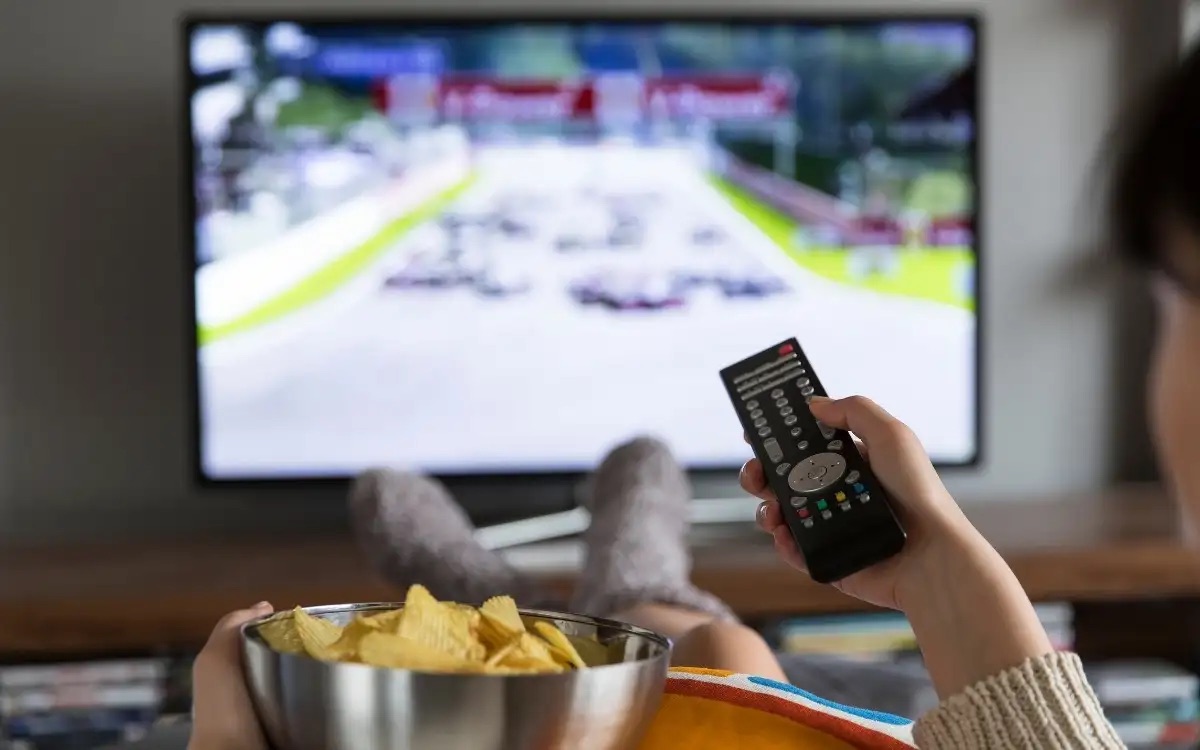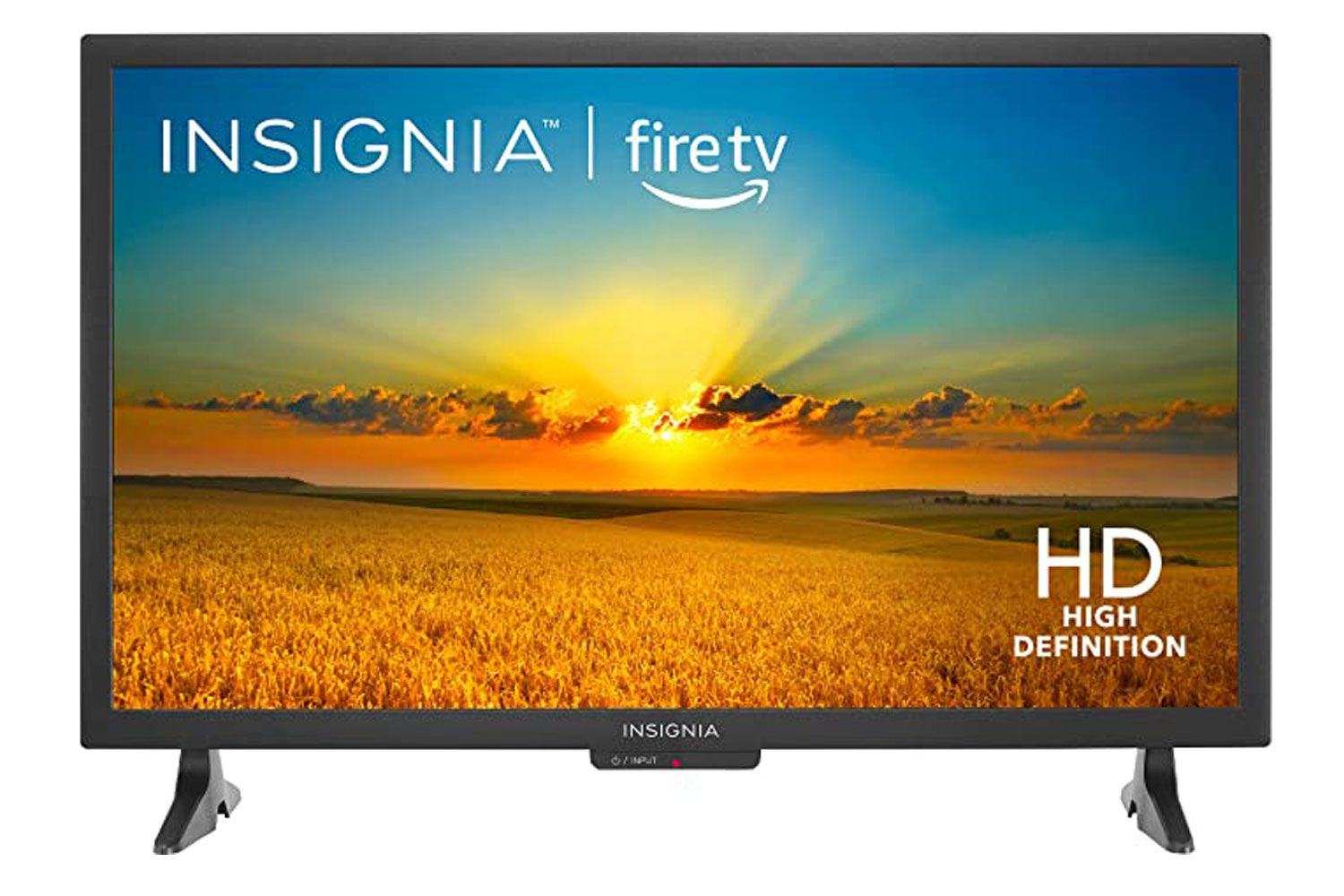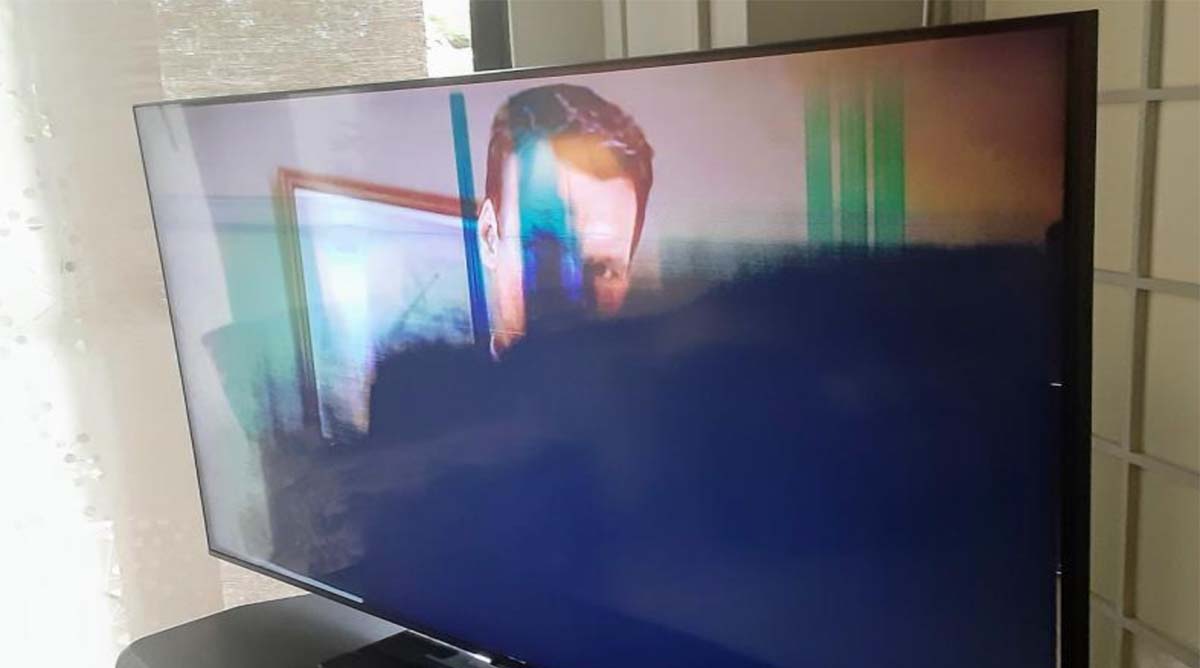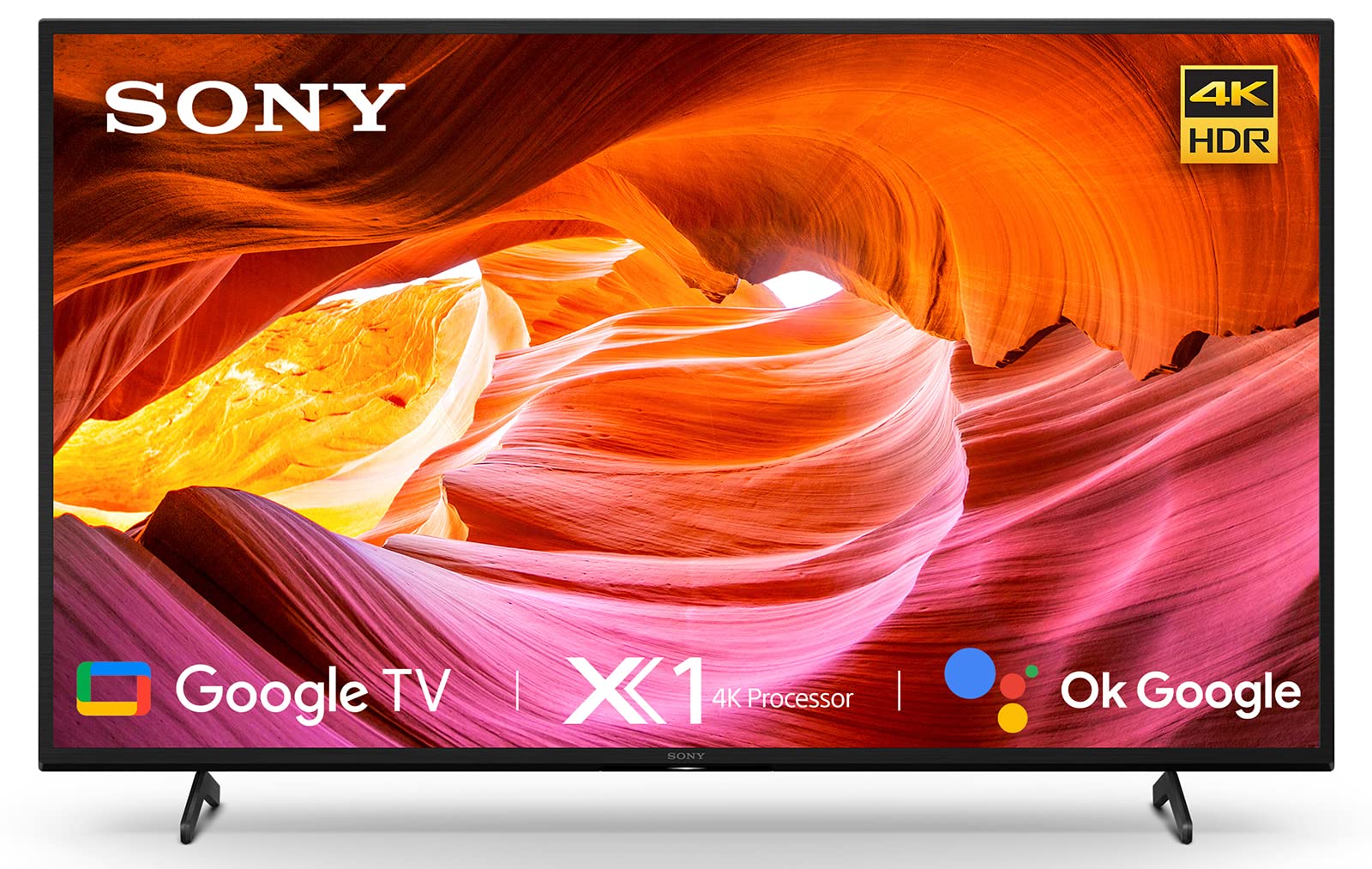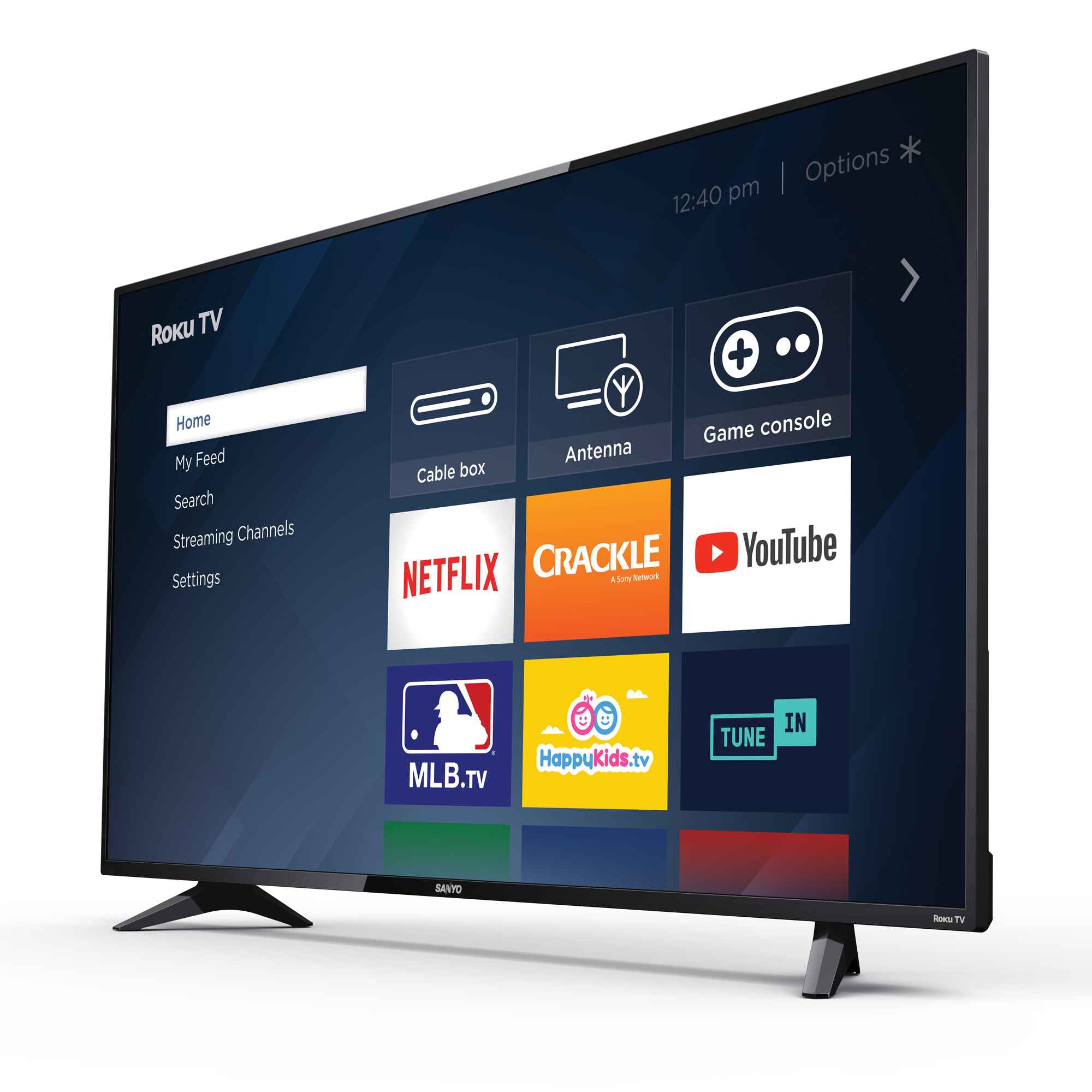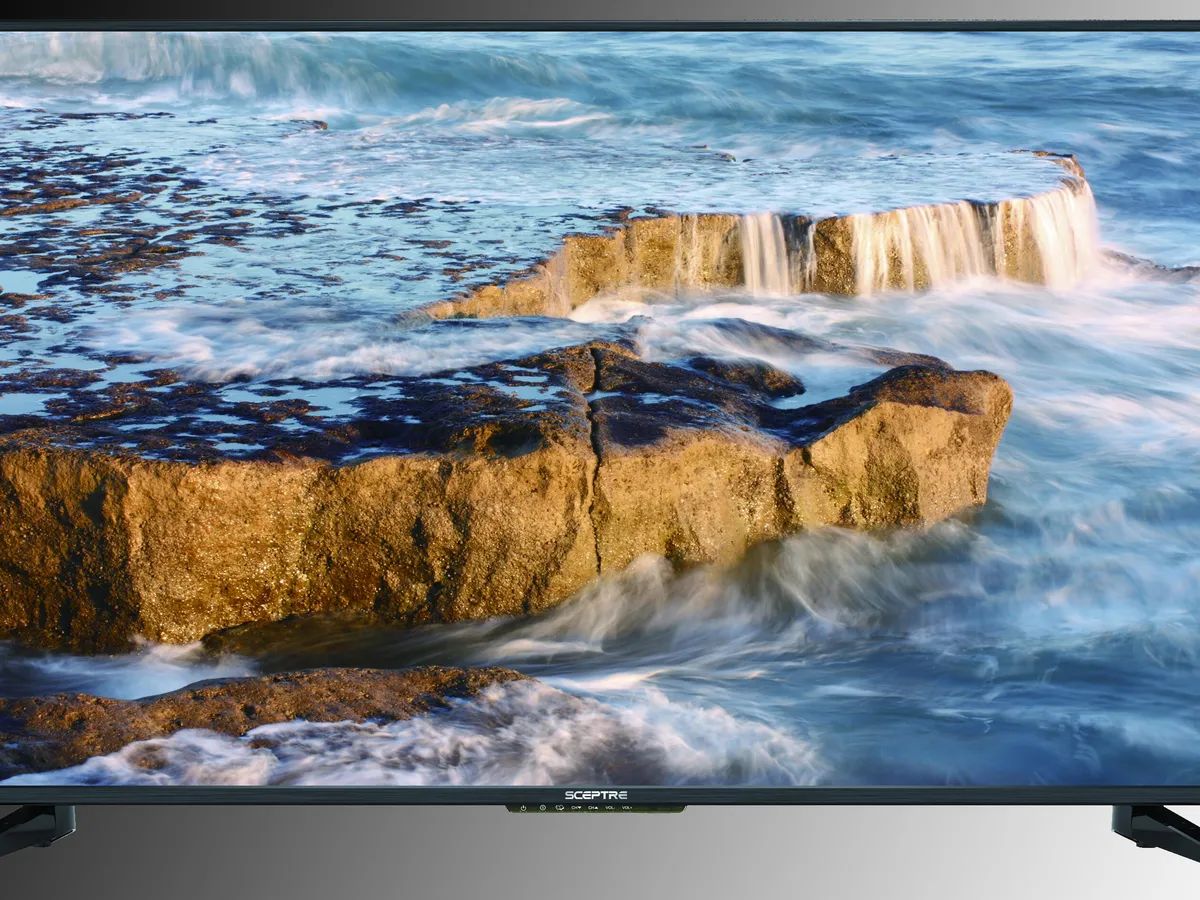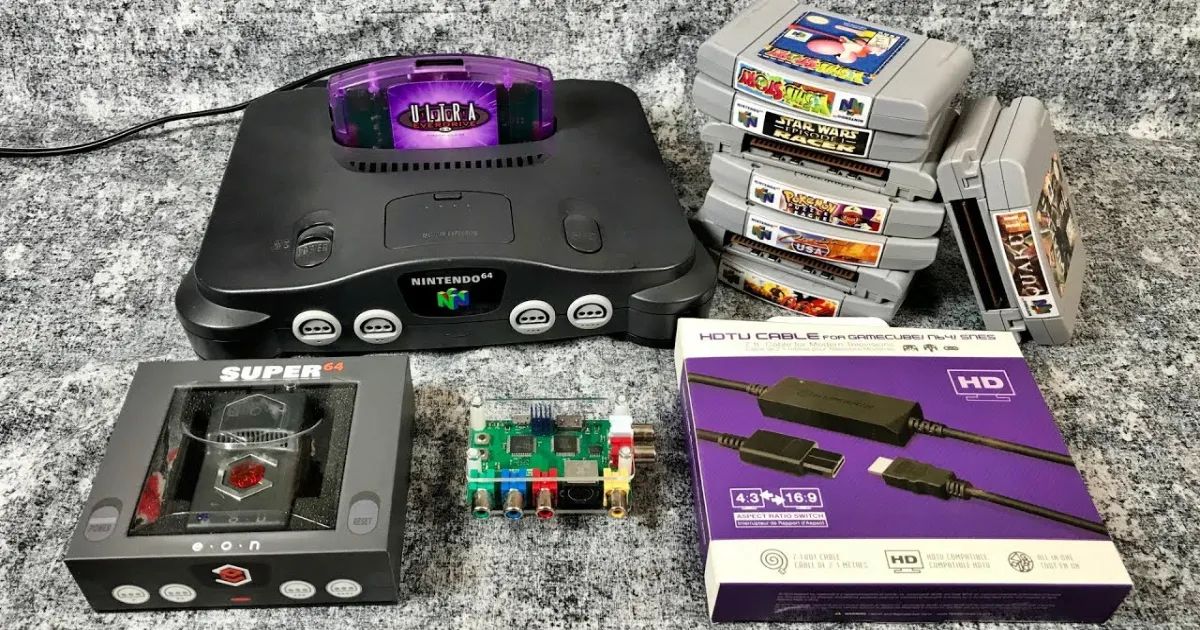Introduction
Have you ever experienced the frustration of sitting down to watch your favorite show on your LED TV, only to find that the screen is fuzzy and the picture quality is poor? It can be incredibly frustrating, especially when you’ve invested in a high-quality TV. But what causes this issue, and is there a way to fix it? In this article, we will explore the common causes of a fuzzy screen on an LED TV and provide some troubleshooting steps to help you resolve the problem.
Before we delve into the potential causes, let’s first understand how LED TVs work. LED stands for Light Emitting Diode, and these TVs use a matrix of tiny LED bulbs to create the images on the screen. Each LED acts as a pixel, and by manipulating the intensity of each LED, the TV can display a wide range of colors and shades. This technology has revolutionized the TV industry, offering vivid and high-quality images.
However, despite the advancements in LED technology, occasional issues with screen fuzziness can still arise. There are several factors that can contribute to a fuzzy screen, including loose cable connections, faulty HDMI cables, overused pixelation, improper input or display settings, and even problems with your antenna or satellite dish.
In the next sections, we will explore these common causes in more detail and discuss some troubleshooting steps to help you resolve the issue. So, if you’ve been experiencing a fuzzy screen on your LED TV, stay tuned and let’s get to the bottom of this problem.
How LED TVs Work
Understanding how LED TVs work is essential in troubleshooting any screen-related issues, including fuzziness. LED, which stands for Light Emitting Diode, is the technology behind these TVs’ stunning display quality. Unlike traditional LCD TVs, LED TVs use an array of tiny LED bulbs to create the images on the screen.
Each LED acts as a pixel, and by controlling the intensity of each LED, the TV can produce a wide range of colors and shades. LED TVs typically consist of three primary colors: red, green, and blue. By combining different intensities of these three colors, the TV can create a vast spectrum of colors, providing bright and vibrant images.
There are two main types of LED TVs: edge-lit and full-array. Edge-lit LED TVs have LEDs placed around the edges of the screen, which illuminate the image from the sides. This design allows for a thin and lightweight TV panel. On the other hand, full-array LED TVs have LEDs positioned directly behind the screen, providing more precise local dimming and better overall contrast levels.
LED TVs also utilize additional technologies to enhance the viewing experience. One such technology is HDR (High Dynamic Range), which expands the TV’s color range and contrast, resulting in more realistic and lifelike images. Another technology is local dimming, which selectively dims certain areas of the screen to create deeper blacks and better contrast.
LED TVs have become incredibly popular due to their exceptional picture quality, energy efficiency, and slim design. They offer a more eco-friendly alternative to traditional CRT and plasma TVs while providing a superior viewing experience. However, even the best LED TVs can encounter issues, such as a fuzzy screen. In the following sections, we will explore the common causes of a fuzzy screen on an LED TV and discuss troubleshooting steps to help you resolve the problem.
Common Causes of Fuzzy Screens
Dealing with a fuzzy screen on your LED TV can be frustrating, but it’s essential to understand the common causes that can lead to this problem. Identifying the root cause will help you determine the appropriate troubleshooting steps to resolve the issue. Here are some of the most frequent culprits behind a fuzzy screen:
- Loose cable connections: Loose or improperly connected cables can result in a weak signal transmission, leading to a fuzzy screen. Make sure that all the cables, including the HDMI, AV, or antenna cables, are securely connected to their respective ports.
- Faulty HDMI cables: HDMI cables play a crucial role in transmitting the high-definition signal from your source device to the TV. If the HDMI cable is damaged or of low quality, it can cause signal degradation and result in a fuzzy screen. Consider replacing the HDMI cable with a new one to see if the issue resolves.
- Overused pixelation: Over time, the pixels on your LED TV can become worn out or over pixelated, leading to a fuzzy screen. This is more noticeable in older models or in areas of the screen that are consistently displaying bright and static images. Unfortunately, there is no quick fix for this issue, and it may be time to consider replacing your TV.
- Incorrect input settings: Ensuring that the correct input source is selected on your TV is important. If the wrong input is chosen, it can result in a fuzzy or distorted screen. Use your TV’s remote control to navigate to the input settings and make sure the appropriate source (e.g., HDMI, AV, or cable) is selected.
- Improper display settings: Your TV’s display settings, such as brightness, contrast, sharpness, and picture mode, can significantly impact the screen’s clarity. If these settings are adjusted incorrectly, it can lead to a fuzzy or blurry image. Access the display settings menu on your TV and ensure that the settings are optimized for your viewing preferences.
- Antenna or satellite dish issues: If you’re using an antenna or satellite dish to receive TV signals, check for any obstructions or misalignments. A misaligned antenna or dish can result in a weak signal, contributing to a fuzzy screen. Adjust or realign the antenna or dish for better signal reception.
Now that we’ve explored the common causes of a fuzzy screen on an LED TV, we can move on to the next section, where we will discuss troubleshooting steps to help you resolve the issue.
Loose Cable Connections
One of the most common causes of a fuzzy screen on an LED TV is loose cable connections. Over time, cables can become dislodged or not fully inserted into their respective ports, resulting in a weak signal transmission and a degraded picture quality. To resolve the issue, follow these troubleshooting steps:
- Check all cable connections: Start by inspecting all the cables connected to your LED TV, including the HDMI, AV, and antenna cables. Ensure that each cable is securely plugged into its corresponding port. Gently push the cable connectors all the way in to ensure a good connection.
- Disconnect and reconnect the cables: If you suspect that a particular cable may be causing the issue, disconnect it from both the TV and the source device. Inspect the connectors for any signs of damage or dirt. Clean the connectors if needed and then firmly reconnect the cable.
- Try a different cable: If you have access to another cable of the same type, such as an HDMI cable, try using it instead. Sometimes, a faulty or damaged cable can cause signal degradation and result in a fuzzy screen. By using a different cable, you can determine if the issue lies with the original cable.
- Secure cables with cable ties or clips: To prevent cables from coming loose again in the future, consider using cable ties or clips to organize and secure them. This will help maintain a stable and reliable connection between your LED TV and the source devices.
- Verify cable compatibility: Ensure that the cables you are using are compatible with your LED TV. Different devices may require specific cable types or versions to support high-definition signals. Check the TV’s user manual or consult the manufacturer’s website to confirm the recommended cables for optimal performance.
- Restart your devices: Sometimes, a simple restart can resolve connectivity issues. Turn off both your TV and the source device (such as a cable box or gaming console), and then power them back on. This can help reestablish the connection and eliminate any temporary glitches or software issues.
By checking and securing your cable connections, you can often resolve a fuzzy screen issue on your LED TV. However, if the problem persists after trying these troubleshooting steps, it may indicate another underlying cause, and further investigation or professional assistance might be necessary.
Faulty HDMI Cables
HDMI (High-Definition Multimedia Interface) cables play a crucial role in delivering high-quality audio and video signals from your source devices to your LED TV. However, if your HDMI cable is faulty or of low quality, it can result in a fuzzy screen and degraded picture quality. To address this issue, consider the following troubleshooting steps:
- Inspect the HDMI cable: Begin by examining the HDMI cable for any visible signs of damage, such as frayed or bent connectors, kinks, or cuts in the cable. These damages can interfere with the signal transmission and lead to a fuzzy screen. If the cable appears damaged, it is recommended to replace it with a new one.
- Verify the HDMI version: HDMI cables come in different versions, and each version offers varying levels of bandwidth and capabilities. Ensure that your HDMI cable is compatible with both your source device and your LED TV. Refer to the user manual or the manufacturer’s specifications for information on the supported HDMI versions.
- Try a different HDMI cable: If you have access to another HDMI cable, preferably one that is known to be functional, substitute it for the potentially faulty cable. Connect the alternate HDMI cable between your source device and LED TV to check if the fuzzy screen issue is resolved. This will help determine if the problem lies with the original cable.
- Consider cable length limitations: HDMI cables have certain length limitations, depending on the version and the quality of the cable. Exceeding these limits can result in signal degradation and a fuzzy screen. If your cable is excessively long, try using a shorter cable or consider using an HDMI extender or repeater to maintain signal integrity.
- Opt for high-quality, certified cables: When purchasing HDMI cables, opt for high-quality cables that are certified to meet the necessary standards. Certified cables are tested to ensure reliable performance and compatibility with high-definition signals. While premium HDMI cables may be more expensive, they offer better durability and can prevent signal degradation.
- Ensure secure connections: Verify that your HDMI cable is securely plugged into both the source device and the HDMI port on your LED TV. Any loose or partially connected cables can result in a weak or intermittent signal, leading to a fuzzy screen. Make sure the HDMI connector is inserted fully and securely into the ports.
By following these troubleshooting steps and addressing any issues with your HDMI cable, you can often resolve the problem of a fuzzy screen on your LED TV. However, if despite these efforts the issue persists, it may indicate another underlying cause, and further investigation or professional assistance might be required.
Overused Pixelation
Over time, LED TVs can develop pixelation issues, which can contribute to a fuzzy or distorted screen. Pixelation occurs when the individual pixels on the display become worn out or excessively used. The result is a degraded image quality that lacks sharpness and clarity. While there is no easy fix for overused pixelation, there are a few steps you can take to address the issue:
- Verify the TV’s age and usage: If you’ve noticed pixelation on your LED TV, consider the age of the television and how frequently it has been used. Older models or TVs that have been in constant use for many hours may be more prone to pixelation issues. Understanding the TV’s usage history can help you gauge whether it’s time to consider a replacement.
- Check the affected areas: In some cases, pixelation may be localized to specific areas of the screen. Pay attention to which parts of the display are most affected and if the pixelation is consistent or intermittent. This information can help determine the severity and potential causes of the issue.
- Perform a screen cleaning: Dust and debris can accumulate on the screen over time, impacting the display quality. Gently clean the LED TV screen using a soft, lint-free cloth to remove any dirt or smudges. Be sure to follow the manufacturer’s instructions for cleaning your specific TV model and avoid using harsh chemicals that can damage the screen.
- Adjust the picture settings: Experiment with the TV’s picture settings to see if any adjustments can improve the pixelation issue. Tweaking settings such as brightness, contrast, and sharpness may help mitigate the fuzzy screen effect to some extent. However, keep in mind that these adjustments may not fully resolve the underlying pixelation problem.
- Consider professional repair or replacement: If the pixelation issue persists or worsens despite your efforts, it may be time to seek professional assistance or consider replacing the TV. Professional technicians might be able to diagnose and repair the underlying cause, such as a faulty display panel. However, depending on the severity and cost of the repair, it may be more economical to invest in a new LED TV.
While overused pixelation can be a challenging issue to address, taking the above steps can help you better understand the problem and explore potential solutions. However, it’s important to note that there may be limitations in resolving pixelation, particularly in older or heavily used LED TVs. Assess your options carefully and make an informed decision based on the cost, severity, and feasibility of addressing the pixelation issue.
Input Settings
When experiencing a fuzzy screen on your LED TV, one potential cause to consider is incorrect input settings. The input settings determine which source device the TV is receiving its signal from, such as a cable box, gaming console, or DVD player. If the wrong input source is selected, it can result in a distorted or fuzzy image. Here are some troubleshooting steps to address input settings related issues:
- Navigate to the input source menu: Using your TV’s remote control, access the menu or settings section related to input sources. The location of this menu may vary depending on your TV model, so refer to the user manual if you’re unsure.
- Select the correct input: Within the input source menu, ensure that the appropriate input source is selected. For example, if you’re using an HDMI cable to connect your cable box, ensure that the HDMI input is chosen. If you’re using an antenna, select the TV or antenna input.
- Check for signal detection: Once you’ve selected the correct input, check if the TV detects a signal from the connected device. Some LED TVs have a signal detection feature that can automatically identify and switch to the active input. If the signal detection fails, try power cycling the connected device and the TV to establish a connection.
- Resolve conflicts with multiple devices: If you have multiple devices connected to your LED TV simultaneously, conflicts in the input settings can cause a fuzzy screen. Double-check that only one device is active and providing a signal to the TV. This can be done by turning off or disconnecting other devices temporarily.
- Reset the input settings: In some cases, input settings may become corrupted or misconfigured, leading to display issues. Consider resetting the input settings to their default values. This can typically be done through the TV’s menu options. However, be aware that resetting input settings may also reset other personalized settings, so make note of any adjustments you’ll need to reapply.
- Update firmware/software: If your TV has firmware or software updates available, ensure that your TV is running the latest version. Manufacturers often release updates to address software bugs and improve functionality, including input detection and compatibility. Check the manufacturer’s website or TV settings menu for instructions on updating the firmware.
By reviewing and adjusting the input settings, you can often resolve issues related to a fuzzy screen on your LED TV. However, if the problem persists or recurs, further troubleshooting may be necessary, such as examining the cables or seeking professional assistance.
Display Settings
When dealing with a fuzzy screen on your LED TV, it is essential to examine the display settings. The display settings control various aspects of the screen, including brightness, contrast, sharpness, and picture mode. Incorrectly configured display settings can result in a distorted or blurry image. Here are some troubleshooting steps to address display settings-related issues:
- Access the display settings menu: Using your TV’s remote control, navigate to the menu or settings section related to display settings. The location of this menu may vary depending on your TV model, so consult the user manual if needed.
- Adjust the brightness and contrast: Start by examining the brightness and contrast settings. If the brightness is set too high, it can result in a washed-out image, while a low contrast setting can lead to a lack of definition. Experiment with different levels to find the optimal balance for your viewing environment.
- Tweak the sharpness: The sharpness setting controls the level of detail and clarity in the image. While it may be tempting to set the sharpness to the highest value, doing so can introduce artificial edge enhancement and lead to a fuzzy or exaggerated image. Adjust the sharpness setting to achieve a balance between sharpness and a natural appearance.
- Explore the picture mode options: LED TVs often offer multiple picture modes, such as Standard, Vivid, Cinema, or Custom. Each mode is optimized for specific viewing preferences or content types. Experiment with different picture modes to see if any of them provide a clearer and less fuzzy image. However, be aware that some modes may enhance certain aspects excessively, potentially leading to an unnatural or distorted image.
- Disable post-processing features: Some LED TVs come with additional post-processing features, such as motion smoothing or noise reduction. While these features can enhance certain aspects of the image, they can also introduce unwanted artifacts and contribute to a fuzzy appearance. Consider disabling these features or adjusting their intensity to see if it improves the overall clarity.
- Restore default display settings: If you’ve made many adjustments or suspect that the display settings have become misconfigured, you can restore the default settings. Look for the option to reset or restore the display settings to their factory defaults within the TV’s menu. Keep in mind that this will revert all settings, not just the display settings.
By examining and adjusting the display settings on your LED TV, you can often improve the clarity and minimize fuzziness. However, it’s important to remember that the optimal settings may vary depending on personal preferences and the specific content being viewed. Take your time to experiment with different settings until you find what works best for you.
Antenna or Satellite Dish Issues
If you’re experiencing a fuzzy screen on your LED TV, issues with your antenna or satellite dish could be the cause. Problems with the signal reception can result in a degraded picture quality. Here are some troubleshooting steps to address antenna or satellite dish-related issues:
- Check the antenna or dish alignment: If you’re using an antenna or satellite dish for TV signal reception, check if it is properly aligned. Adjust the position of the antenna or dish to ensure that it is pointing towards the broadcasting tower or satellite. Interference from obstacles such as tall buildings or trees can affect signal strength, so try to minimize any potential obstructions.
- Inspect the antenna or dish: Examine the antenna or satellite dish for any physical damage or corrosion. Ensure that all cables connected to the antenna or dish are securely attached and not damaged. Replace any damaged cables or connectors as necessary.
- Check for loose connections: Make sure that all cables connected to the antenna or satellite dish are tightly connected to their respective ports. Loose connections can result in a weak signal and cause a fuzzy screen. If any connectors appear loose, carefully reseat them to establish a secure connection.
- Consider using an amplifier: If you’re using an antenna, consider using a signal amplifier or a preamplifier. These devices help boost the TV signal strength, especially in areas with weak reception. Install the amplifier near the antenna, following the manufacturer’s instructions, to enhance the signal quality.
- Check antenna direction: If you’re using an antenna, ensure that it is positioned to receive signals from the correct direction. Use online tools or apps that provide information about the closest broadcasting towers and their respective directions. Adjust the antenna’s orientation to align it with the strongest signal source.
- Test with a different antenna or satellite dish: If possible, try connecting a different antenna or satellite dish to your LED TV. This test will help determine if the issue lies with the original antenna or dish. If the picture quality improves with the replacement equipment, it suggests that the original antenna or dish may be faulty and requires replacement or professional servicing.
By troubleshooting and addressing any antenna or satellite dish issues, you can improve the signal reception and potentially resolve the fuzzy screen problem on your LED TV. However, if the issue persists, it’s advisable to seek professional assistance or consult your service provider to ensure the proper functioning of your antenna or satellite system.
Troubleshooting Steps
If you’re experiencing a fuzzy screen on your LED TV, here are some troubleshooting steps to help you identify and rectify the issue:
- Inspect cable connections: Check all cable connections, including HDMI, AV, and antenna cables, to ensure they are securely plugged in. Loose or improperly connected cables can result in a weak signal and a fuzzy screen.
- Replace faulty HDMI cables: If you suspect that the HDMI cable is causing the issue, try using a different HDMI cable to see if the fuzzy screen problem resolves. Faulty or low-quality HDMI cables can degrade the signal quality.
- Address overused pixelation: If your LED TV is exhibiting signs of overused pixelation, such as a fuzzy or blurry image, there may be no immediate fix. Consider replacing the TV to enjoy a clearer and sharper picture quality.
- Check input settings: Ensure that the correct input source is selected on your TV. Incorrect input settings can result in a fuzzy or distorted screen. Verify that the TV is set to the appropriate input source (e.g., HDMI, AV, cable, etc.).
- Adjust display settings: Review and fine-tune the display settings on your LED TV. Experiment with brightness, contrast, sharpness, and picture mode to achieve a clearer and less fuzzy image.
- Examine antenna or satellite dish: If you’re using an antenna or satellite dish, check for alignment issues, physical damages, and loose connections. Adjust the position of the antenna or dish, replace damaged cables if necessary, and ensure all connections are secure.
- Perform soft reset: Sometimes, a soft reset can solve minor glitches. Turn off the TV, unplug it from the power source, wait for a few minutes, then plug it back in and power it on. This can help reset the TV’s settings and potentially resolve the fuzzy screen problem.
- Update firmware/software: Check if there are any firmware or software updates available for your LED TV. Manufacturers often release updates to address bugs and improve performance. Updating the TV’s firmware can help resolve issues related to fuzzy screens.
- Consult user manual or seek professional help: If the fuzzy screen problem persists despite trying the above steps, refer to your TV’s user manual for further troubleshooting instructions. If necessary, contact the manufacturer’s support or seek assistance from a professional technician.
By following these troubleshooting steps, you can often identify and resolve the issues causing a fuzzy screen on your LED TV. However, if the problem persists or seems to be a hardware defect, contacting a professional technician or the manufacturer’s support can provide further guidance and assistance.
Conclusion
Experiencing a fuzzy screen on your LED TV can be frustrating, but by understanding the various causes and implementing the appropriate troubleshooting steps, you can often resolve the issue and restore a clear and crisp picture quality. Loose cable connections, faulty HDMI cables, overused pixelation, incorrect input or display settings, and antenna or satellite dish issues can all contribute to a fuzzy screen. By checking cable connections, replacing faulty cables, adjusting display settings, and addressing antenna or dish problems, you can significantly improve the image quality.
Remember to inspect and secure cable connections, perform compatibility checks, and adjust settings to achieve the optimal picture quality. Additionally, keeping your LED TV and its accessories well-maintained can minimize the likelihood of encountering fuzzy screen issues. Regularly cleaning the screen and checking for damage or wear can help ensure a clearer viewing experience.
In some cases, resolving a fuzzy screen may require consulting the user manual, seeking professional assistance, or considering a replacement if the TV is significantly worn or obsolete. Remember to verify warranty coverage and explore available support options from the manufacturer or service provider.
Overall, troubleshooting a fuzzy screen issue on your LED TV requires patience, attention to detail, and adherence to the recommended troubleshooting steps. By applying these strategies, you can often identify and resolve the underlying causes, leading to an improved and enjoyable viewing experience with a crisp and clear screen.







